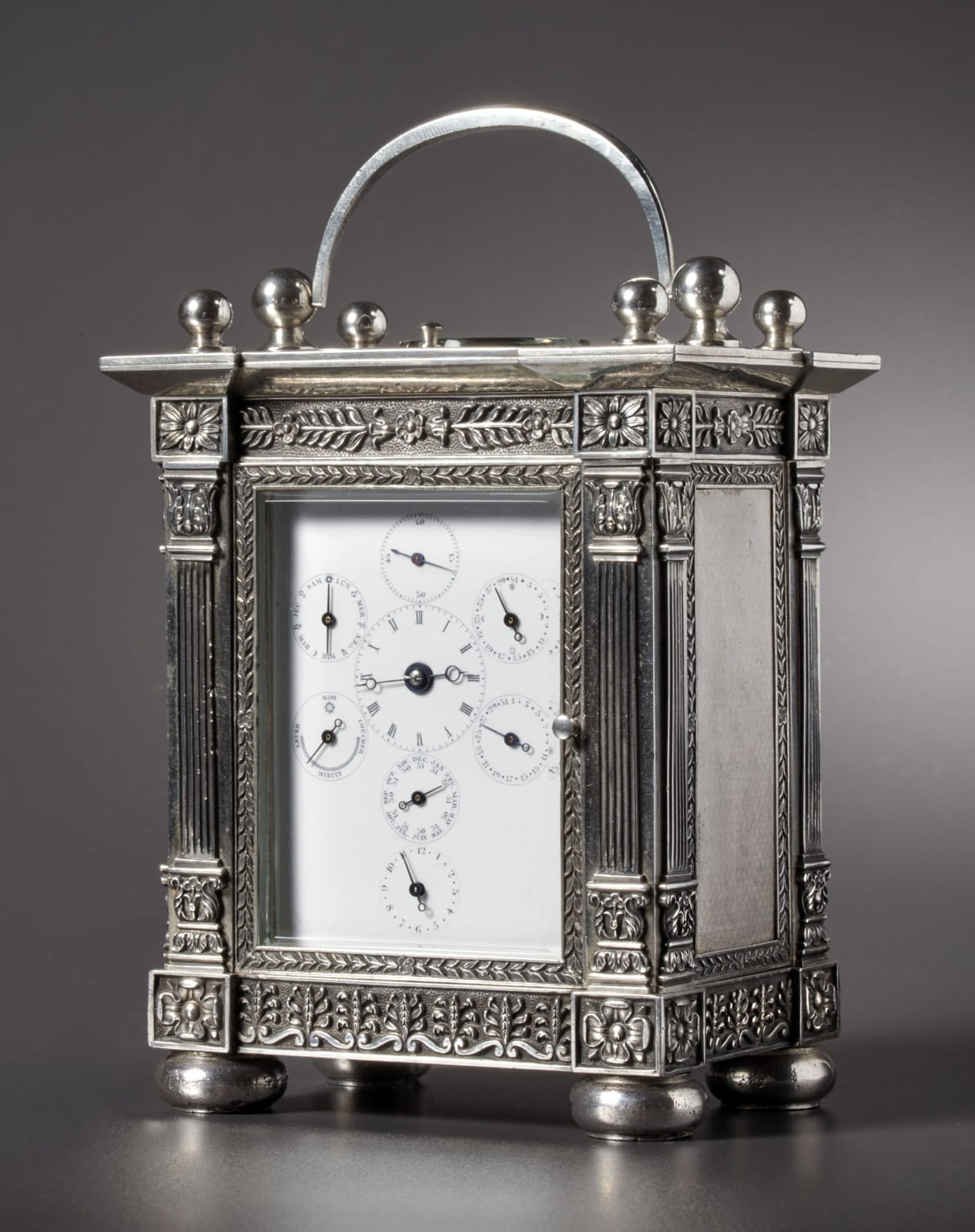
Charles Allix, “Carriage Clocks, their History and Development”, 1974, p.72, pl. II/43 and p. 73, pl. II/47, showing very similar escapements in a Bolviller and a Jules carriage clock.
Henri Moser
Literature
Charles Allix, “Carriage Clocks, their History and Development”, 1974, p.72, pl. II/43 and p. 73, pl. II/47, showing very similar escapements in a Bolviller and a Jules carriage clock.
A superb and very rare solid silver astronomical carriage clock of eight day duration made in St. Petersburg by the famous Swiss clockmaker Henri Moser, stamped on the base of the case H. Moser & Cie and numbered 7056 and hallmarked St. Petersburg on each individual part of the magnificent silver case. The extremely fine technical rectangular white porcelain dial plate with central circular dial with Roman numerals indicating the hours and minutes, surrounded by six subsidiary dials showing clockwise from top: the seconds, numbered 15, 30, 45, 60; the days of the lunar month 1-29½; the days of the month, 1-31; the names and numbers of days in each months; the relative positions of the sun at sun rise, midday, sunset and midnight; the names and symbols of the days in the week, with a seventh subsidiary dial below for the alarm.
Each of the eight dials having delicate blued steel hands or pointers. The movement with chronometer escapement, with push repeat and alarm. The magnificent Breguet style solid silver case with each component fully hallmarked, the front and sides with fluted pillars headed by paterae and decorative frieze surmounted by six ball finials, a looped carrying handle and a circular glazed viewing aperture in the silver engine-turned top, the base with paterae at each corner and a styled anthemion frieze on bun feet
St. Petersburg, date circa 1840
Fully hallmarked.
Height without handle 14 cm, width 12 cm, depth 7.5 cm.
Henri Moser (1803/5-74), who descended from a long line of Swiss clockmakers, was the paternal grandson of Johannes Moser (1731-1820) and son of Erhard Moser (1760-1820) who both worked at Schaffhausen Switzerland. Like other Swiss clockmakers such as Paul Leopold Buhré, Moser left Le Locle in Switzerland for Russia, where from 1827-48 he worked in St. Petersburg, essentially to establish trading connections there. On his return to Switzerland in 1848 he ran his own firm of H. Moser & Cie, based in Schaffhausen and Le Locle, where he made many movements and complete pieces for the Russian market. After his death and up until 1917 his firm continued to deliver movements to Russia.
Although many nineteenth century Russian gold and silversmiths produced watch and clock cases very nearly all of them housed Swiss movements. A report of 1884, from the Swiss consul in St. Petersburg noted that by then nearly all timepieces sold in Russia came from Switzerland. In particular the celebrated firms of gold and silversmiths, Fabergé imported nearly all their movements from H. Moser et Cie and to a lesser extent those from Paul Buhré. Moser and Buhré also supplied to Britzin of Russia.


